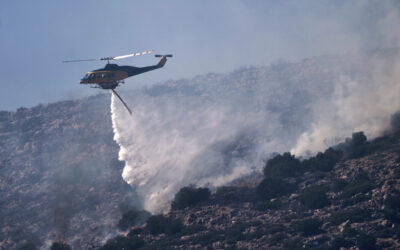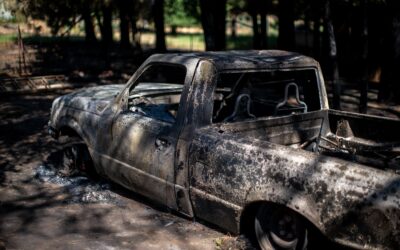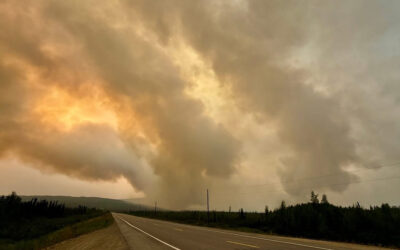Sep. 7—When a wildfire sparks, swift response times by first responders can mean the difference between a small brush fire and a deadly inferno.
State officials say new artificial intelligence cameras installed in fire danger zones around Washington will improve wildfire response times by alerting dispatch centers at the first signs of smoke from flames.
On Thursday, state lands commissioner Hilary Franz held a news conference at the Washington Department of Natural Resources headquarters in Ellensburg to announce the installation of the fire-detecting cameras across the state.
Franz remembered in her public remarks the devastating Gray and Oregon Road fires that decimated hundreds of homes and have been linked to two deaths last month in Spokane County. More than 1,000 firefighters from multiple states responded to the disaster on the ground and in the air.
“At any point in time, in any community — whether it’s rural, suburban or urban — we are all at risk in Washington state,” Franz said of the Spokane County fires. “Central, Eastern and Western Washington. It’s also a reminder that we are still in the midst of fire season.”
Temperatures on Thursday in Ellensburg climbed into the mid-70s. Outside the DNR headquarters, bright sunlight beat down on a brown wooden sign with Smokey Bear on it displaying the words, “FIRE DANGER VERY HIGH TODAY.”
Since April, more than 1,750 fires have sparked in Washington, according to the DNR. A total of 155,000 acres have burned.
“We know that we still have a few more months to go,” Franz said. “We got a little bit of rain, but it’s hot and dry again.”
Franz said 95% of the fires in Washington this year have been kept to fewer than 10 acres — exceeding the DNR’s goal of keeping 90% within that size. A lot of that containment has been thanks to quick response times by fire crews, Franz said.
But for fires that take longer to detect or are in more remote areas, the new AI cameras could be a game-changer, officials say.
The DNR has partnered with wildfire detection company Pano AI and cell phone company T-Mobile to install 21 wildfire detection camera sites around Washington by June. Nine camera sites have been set up so far in the past five months. The cameras are being attached to existing infrastructure, most commonly cell phone towers, lands commission spokesperson Michael Kelly said.
Funding for the new cameras came out of state coffers, specifically a wildfire danger reduction bill signed into law in 2021.
State fire officials took care to place the 21 cameras in places they’d be most useful, said Angie Lane, assistant manager of the DNR wildfire division.
“They are in high-priority areas where we’ve experienced a large number of fires,” Lane said. “That combined with the topography and the fuels that are located at those sites makes them prime locations for each detection system.”
Each site has two 360-degree AI cameras. When a camera detects a fire, an alert is sent to DNR dispatch centers. Dispatch will treat the alert as if it’s a reported fire from a 911 call, at which point an official will take a look at the view from the camera to verify whether the fire is real.
The cameras will help firefighters find the coordinates of a wildfire that may otherwise be difficult to find due to remote location or complicated terrain, officials say. Optical zoom on the camera lenses will also help officials watch a fire burn in real-time and better plan how to deploy resources, even if a fire is miles away from the cameras.
“A lot of the areas where they are first going to be installed are going to be areas that tend to be more mountainous, more forested — because you might not always have eyes on the ground in those areas,” Franz said.
Franz on Thursday shared an example of a fire that sparked this season in Okanogan County where a firefighter hiked three miles on foot to get eyes on the flames and help make a response plan. AI cameras can substantially reduce that wait time, officials say, potentially improving safety for first responders and civilians.
“This isn’t a small state. Twenty-two pano cameras don’t get you very far,” Franz said. “And having them just on state lands also doesn’t necessarily help you. Because we have to be bringing in our partners — our federal lands, our private lands and our Tribal lands.”
The lands commissioner said it is her goal to install at least 60 of the wildfire cameras around Washington in the next few years.
Ellen Dennis’ work is funded in part by members of the Spokane community via the Community Journalism and Civic Engagement Fund. This story can be republished by other organizations for free under a Creative Commons license. For more information on this, please contact our newspaper’s managing editor.
___
(c)2023 The Spokesman-Review (Spokane, Wash.)
Visit The Spokesman-Review (Spokane, Wash.) at www.spokesman.com
Distributed by Tribune Content Agency, LLC.




